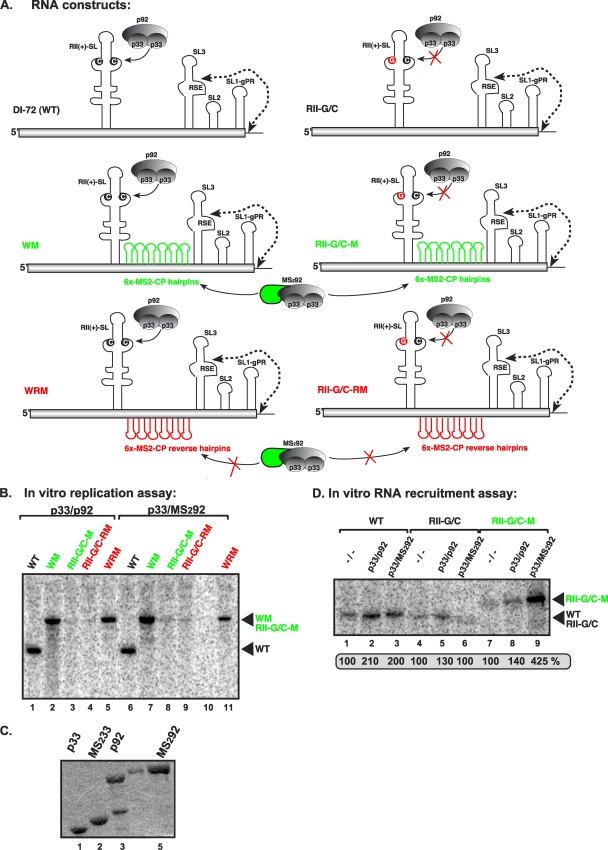Fig 8.
RII(+)-SL is required for in vitro assembly of the TBSV replicase. (A) Schematic representation of the RNA constructs used in the in vitro replication assay. Constructs WM and RII-G/C-M contain six copies of the MS2-CP hairpin (green), which can specifically bind to MS2-CP. p92 was fused to MS2-CP (green) as indicated. Constructs WRM and RII-G/C-RM contain six copies of the complementary MS2-CP hairpin sequence (red), which cannot bind to MS2-CP. The predicted status of binding of the RNA constructs to p33/p92 or the MS2-CP fusion proteins is shown with plain arrows (positive binding) or arrows crossed with red (no binding). (B) Denaturing-PAGE analysis of the CFE-based replication assay. The in vitro replication assay contained yeast CFE, affinity-purified recombinant TBSV p33 and p92pol or the MS2-CP fusion p92 protein, and equal amounts of the indicated TBSV repRNA templates. The full-length products are indicated with arrowheads on the right. Note that the repRNAs serve as both assembly factors and templates in this assay. (C) SDS-PAGE analysis of the affinity-purified recombinant proteins. (D) Denaturing-PAGE analysis of the in vitro RNA recruitment assay. The assay contained CFE, affinity-purified recombinant TBSV p33 and p92pol or the MS2-CP fusion p92 protein, and equal amounts of 32P-labeled TBSV repRNA templates. After the recruitment assay, the membrane-associated P32-labeled repRNAs were quantified.

